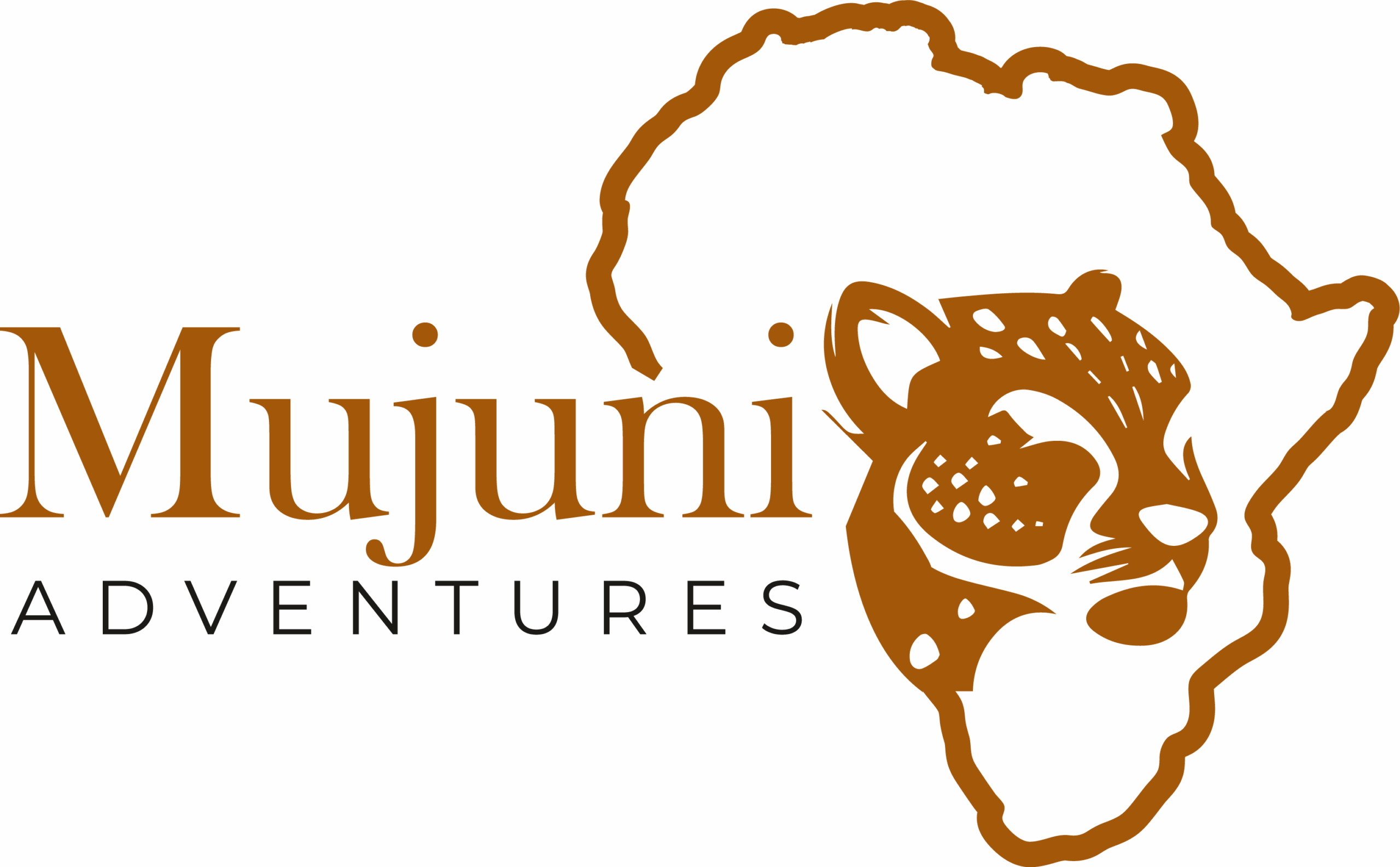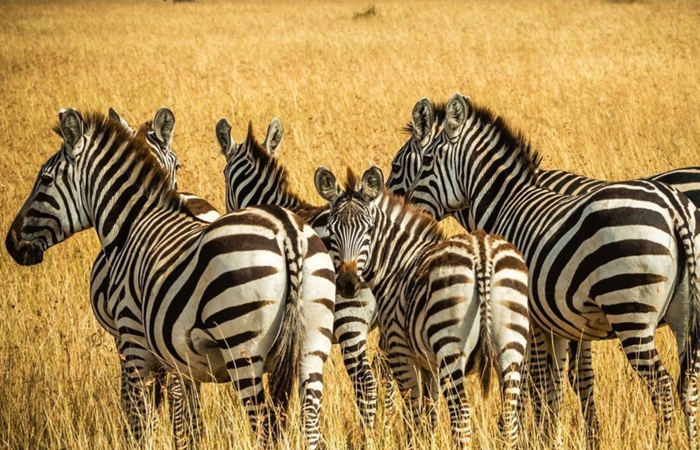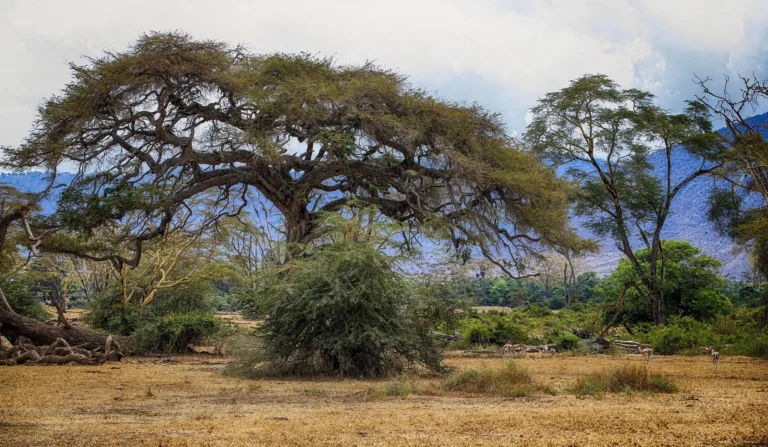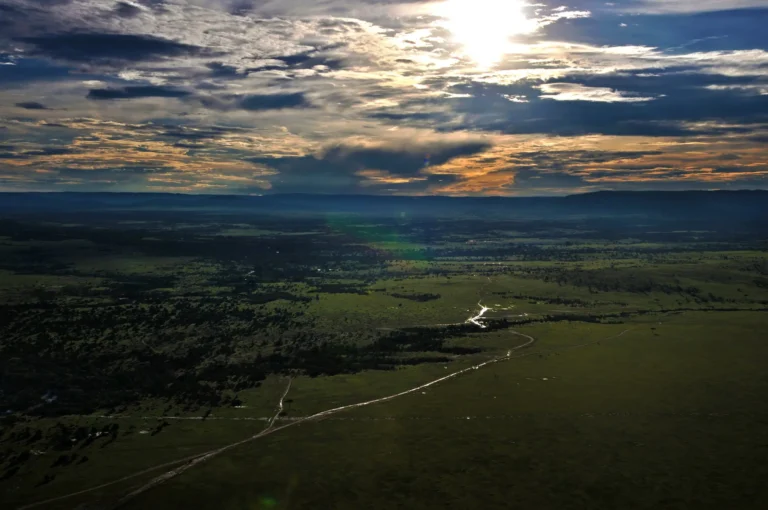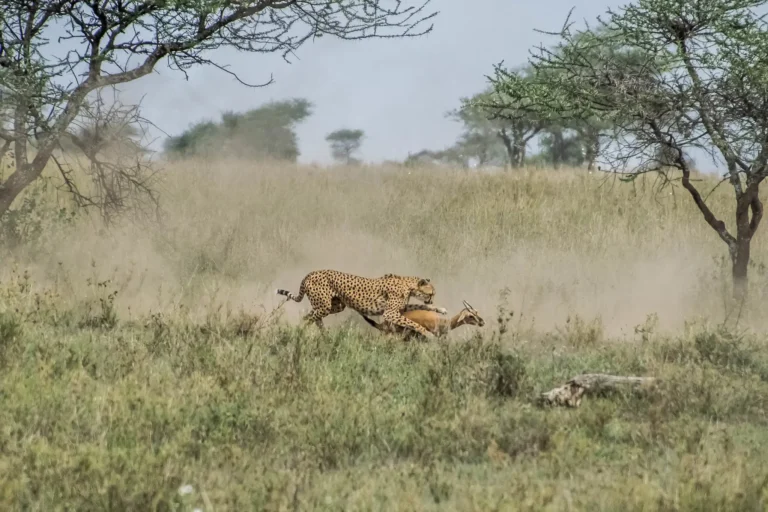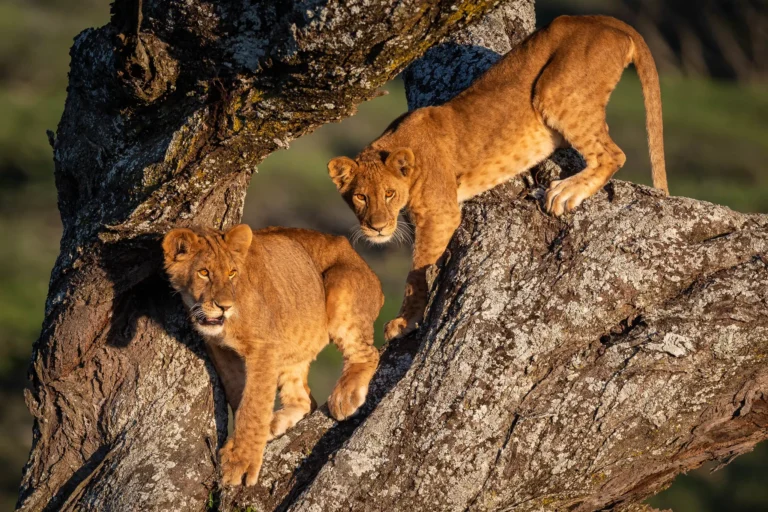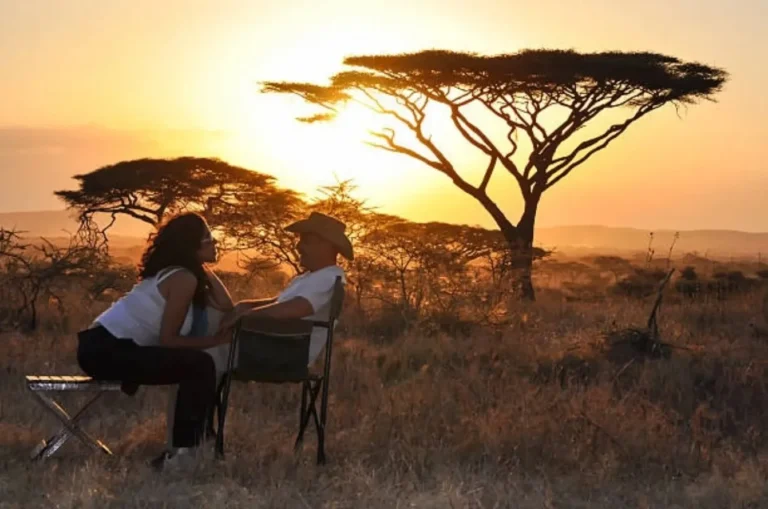Ngorongoro Crater Safari Guide: Wildlife, Views & Lodges You’ll Love
Welcome to the Ngorongoro Crater – a natural wonder that feels like it was crafted for wildlife lovers, adventure seekers, and dreamers. Nestled in Tanzania’s northern safari circuit, this UNESCO World Heritage Site is one of the best places on Earth to witness dense populations of wildlife against a backdrop of breath-taking scenery.
Whether you’re a first-time traveller or a seasoned safari enthusiast, this guide from Mujuni African Adventures will help you discover everything you need to know about planning a once-in-a-lifetime Ngorongoro Crater safari — from epic game drives to luxury lodges perched on the crater rim.
Ngorongoro Crater at a Glance
Located in northern Tanzania, the Ngorongoro Crater is the world’s largest unbroken, unflooded volcanic caldera. It was formed about two to three million years ago when a massive volcano erupted and collapsed on itself.
- 🌍 Location: Part of the Ngorongoro Conservation Area
- 🏆 UNESCO Status: World Heritage Site since 1979
- 📏 Size: Approx. 260 square kilometres
- ⛰️ Depth: Over 600 meters (2,000 feet) deep
The crater serves as a natural enclosure for wildlife, offering an unmatched safari experience where you’re almost guaranteed to see the Big Five — all in one day!
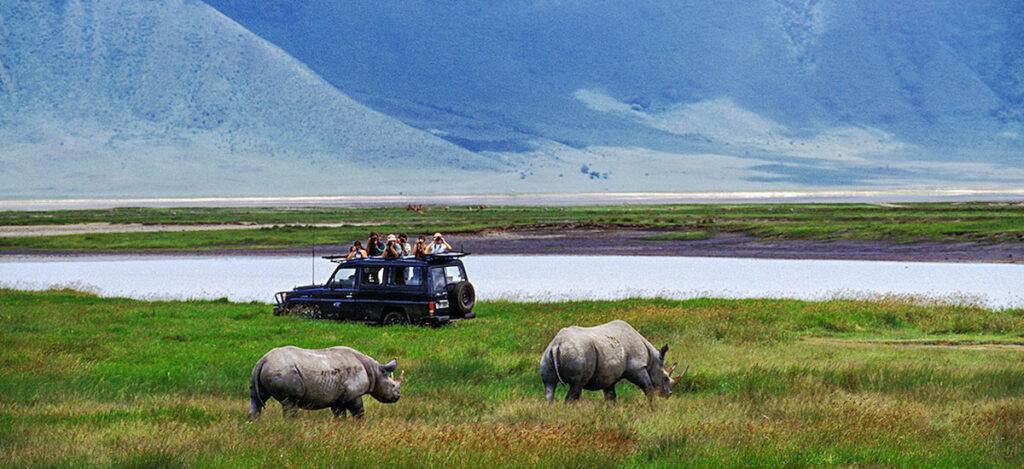
Wildlife Wonders in the Crater
The Ngorongoro Crater is home to more than 25,000 animals, making it one of the most densely populated wildlife areas in Africa. This makes it ideal for photographers, nature lovers, and families alike.
The Big Five:
- Lions – Powerful and regal, often spotted resting or hunting in the open grasslands
- Leopards – Elusive but occasionally seen along the crater rim forests
- Elephants – Majestic bulls with large tusks roam the forests
- Black Rhinos – Rare and endangered, but the crater is one of the few places to spot them
- Cape Buffaloes – Always in herds, often near water sources
Other Notable Species:
- Hippos, zebras, wildebeests, cheetahs, hyenas
- Birdlife including flamingos, eagles, and crowned cranes
- Flamingos flock to Lake Magadi inside the crater during certain months
Scenic Beauty & Unique Landscapes
Apart from the animals, the landscapes inside the Ngorongoro Crater will leave you speechless. Expect changing scenery that feels like walking through different worlds.
- 🌄 Crater Rim Views: Stunning vistas that stretch as far as the eye can see
- 🌳 Lerai Forest: A lush green forest that hides elephants and leopards
- 🦩 Lake Magadi: A seasonal lake that attracts flocks of pink flamingos
- 🏞️ Open Plains: Where lions, zebras, and wildebeests graze freely
Capture the sunrise or sunset from the crater rim, and you’ll understand why it’s often called the “Eighth Wonder of the World.”
Best Time to Visit Ngorongoro Crater
The crater is a year-round destination, but here’s what you should consider:
- Dry Season (June to October): Ideal for wildlife visibility; animals gather around water sources.
- Wet Season (November to May): Lush landscapes and fewer crowds. Birdwatching is at its best.
Best months for photography: January to March and June to October.
Top Lodges & Camps You’ll Love
Luxury Lodges
- Ngorongoro Crater Lodge – Often compared to a “Baroque palace,” with dramatic views and exceptional service
- The Highlands by Asilia – Unique domed suites with panoramic views and cultural immersion
- Entamanu Ngorongoro – Eco-conscious luxury set right on the crater rim
Mid-Range Options
- Ngorongoro Sopa Lodge – Family-friendly with the best sunset views
- Rhino Lodge – Comfortable, cozy, and perfect for mid-budget travellers
Budget-Friendly Camps
- Simba Campsite – The best budget option with a real wilderness feels
- Local Guesthouses – Available in nearby Karatu town, just outside the crater
Looking for a stay that matches your budget and travel goals? At Mujuni African Adventures, we’ll help you find the perfect fit.
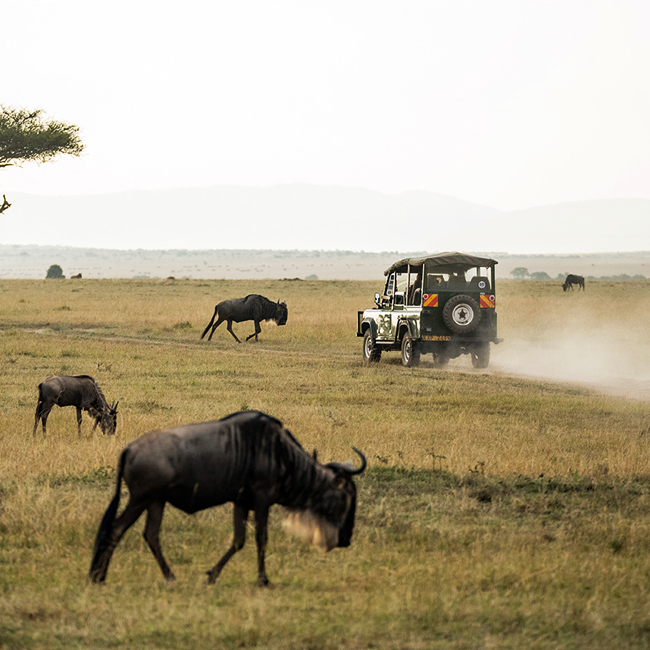
Safari Activities Inside the Crater
The Ngorongoro Conservation Area offers more than just game drives:
- 🚙 Game Drives – Half-day or full-day tours inside the crater floor
- 🚶 Walking Safaris – Along the crater rim for birdwatching and scenery
- 🛖 Maasai Village Visits – Learn about the local culture and traditions
- 🌍 Cultural Tours – Explore coffee farms, markets, and traditional communities nearby
Travel Tips & Safari Essentials
Before you go, keep these in mind:
- 🎒 What to Pack: Warm layers (mornings are chilly), camera, binoculars, sunscreen, hat
- 🦟 Health Tips: Carry mosquito repellent, drink bottled water, and consult your doctor about vaccinations
- 📷 Photography Tip: Bring a zoom lens and avoid using flash near animals
Ngorongoro Crater vs. Serengeti & Other Parks
Feature | Ngorongoro Crater | Serengeti | Tarangire/Lake Manyara |
Wildlife Density | Extremely high | Great Migration, open plains | Seasonal migration, elephants |
Landscape Type | Caldera with mixed habitats | Vast savannah | Forests, swamps, baobabs |
Safari Duration | 1-day safari possible | 2–4 days recommended | 1–2 days |
Pro Tip: Combine Ngorongoro with Serengeti and Tarangire for the full Northern Tanzania safari experience with Mujuni African Adventures.
Conclusion: Why You’ll Fall in Love with Ngorongoro
The Ngorongoro Crater isn’t just a place—it’s an experience of a lifetime. From the moment you stand on the rim and gaze into the wildlife-filled caldera, you’ll know you’ve entered somewhere truly extraordinary.
At Mujuni African Adventures, we specialize in curating unforgettable safari journeys in Tanzania. Whether you’re looking for a luxury escape or an adventurous budget trip, our tailor-made packages ensure you get the best of Ngorongoro and beyond.
👉 Book Your Dream Safari Today!
📧 Email: mujuniafricanadventures@gmail.com
🌍 Website: https://mujuniafricanadventures.com
📱 WhatsApp: +255 672 450 072
Let us take you closer to nature, wildlife, and moments you’ll cherish forever.
